Need a real mango treat? This Mango Mousse Cake is a decadent cake made of a moist sponge cake topped with a creamy mango mousse, then finished with a sweet mango gel topping. This is your serious mango craving fix!

As mangoes arrive at our house one carton full after another, I get reminded to make this simply elegant Mango Mousse Cake.
It is my way of celebrating the mango season by giving it the limelight it deserves.
Between my father, and my nanay, it will seem that we have a steady supplier of mangoes. We don’t. They just kind of panic buy each time they see a box of nice, plump mangoes in Asian supermarkets.
Canned Mango Pulp
But here is the thing though, this mango mousse cake, they are not made using fresh mangoes. I used the canned, pureed ones. While you can use fresh mangoes to make this cake, I can’t remember the last time I did so.
There is hardly any difference between the two, except I get spared from using the blender as an additional step when using the fresh ones. The canned ones are wonderful and tasty as fresh, and the convenience of using them cannot be beaten.
The ones like Kesar Mango Pulp or Alphonso Mango Pulp are the ones I always use. Note that these mango pulps are different from the mango nectars and mango juices. These canned mango pulp can be found in the Oriental/ Oriental aisle of supermarkets.
What if I Want to Use Fresh Mangoes?
But of course, you can! You just need to puree the pulp in a blender. About 6-7 large Alphonso mangoes are needed in this recipe.
The goal is to yield 3 cups of puree. Also, since the sweetness of the fresh mangoes varies, you may need to adjust it by adding sugar.
I do so by stirring the mango puree and the desired amount of sugar over medium heat in a saucepan, just until the sugar dissolves.
Mango Mousse Cake: The Process
Sponge Cake
The heart of sponge cakes is the beaten whole eggs. In the bowl of a stand mixer (or handheld mixer), beat the eggs until foamy. Then add the sugar gradually and keep beating for about 7-10 minutes until the mixture is thick and pale.
When you lift up the beater, the batter should drip down and hit the surface and form ribbons that do not sink right away.
Sift the powders ( flour and baking powder) over the egg batter gradually. Fold after each addition until no streaks of flour remain. Always check the bottom of the bowl for pockets of flour that you may have missed.
Pour and scrape the batter into an 8- inch springform pan that is lined with parchment paper at the bottom. Bake at 350 F for 20-25 minutes.
Let the cake cool slightly in the pan. Then unmold it by removing the cake ring and let it cool completely on a wire rack with only the parchment paper attached to it.
Return and enclose the cake in the springform pan and brush the surface with enough stock syrup. Recipe for stock syrup in the recipe card.
Mango Mousse
The mango mousse is a mixture of whipped cream and mango puree. For the mixture to set, unflavored gelatin is added to it.
Whip the cream in the bowl of a stand mixer until it is fluffy and thick. Fold the whipped cream gradually into the mango puree until well combined.
For the gelatin, sir water and gelatin powder in a small microwaveable bowl. Microwave the mixture for 15 seconds or so, until the mixture is clear. Let this cool slightly.
To add this mixture to the whipped mango cream, first, scoop out about 1/4 cup of whipped cream and stir it into the gelatin mixture.
Then, fold the gelatin-cream mixture back to the whipped mango cream in the bowl and stir well.
Pour the mango mousse over the sponge cake. Just pour it away and let the mixture occupy the entire surface. Refrigerate the cake for 8 hours or until the mousse is set.
Mango Gel Topping
Stir sugar together sugar and mango puree. You can add more sugar (or less) if you prefer. The mango gel is also set using gelatin powder.
Sprinkle the unflavored gelatin over the water and let the mixture stand for half a minute. Microwave the mixture until it is clear, about 10 seconds or so.
Again, stir about 2 tablespoons of the mango mixture into the gelatin. Stir the mixture back to the mango puree until smooth. Gently pour over the mango mousse. Refrigerate the cake for 2-4 hours or until set.
So as I feast on the fresh mangoes that abound in our house, I also indulge in this mango mousse cake. You just can’t have too many mangoes.
They are wonderful. Enjoy this cake!
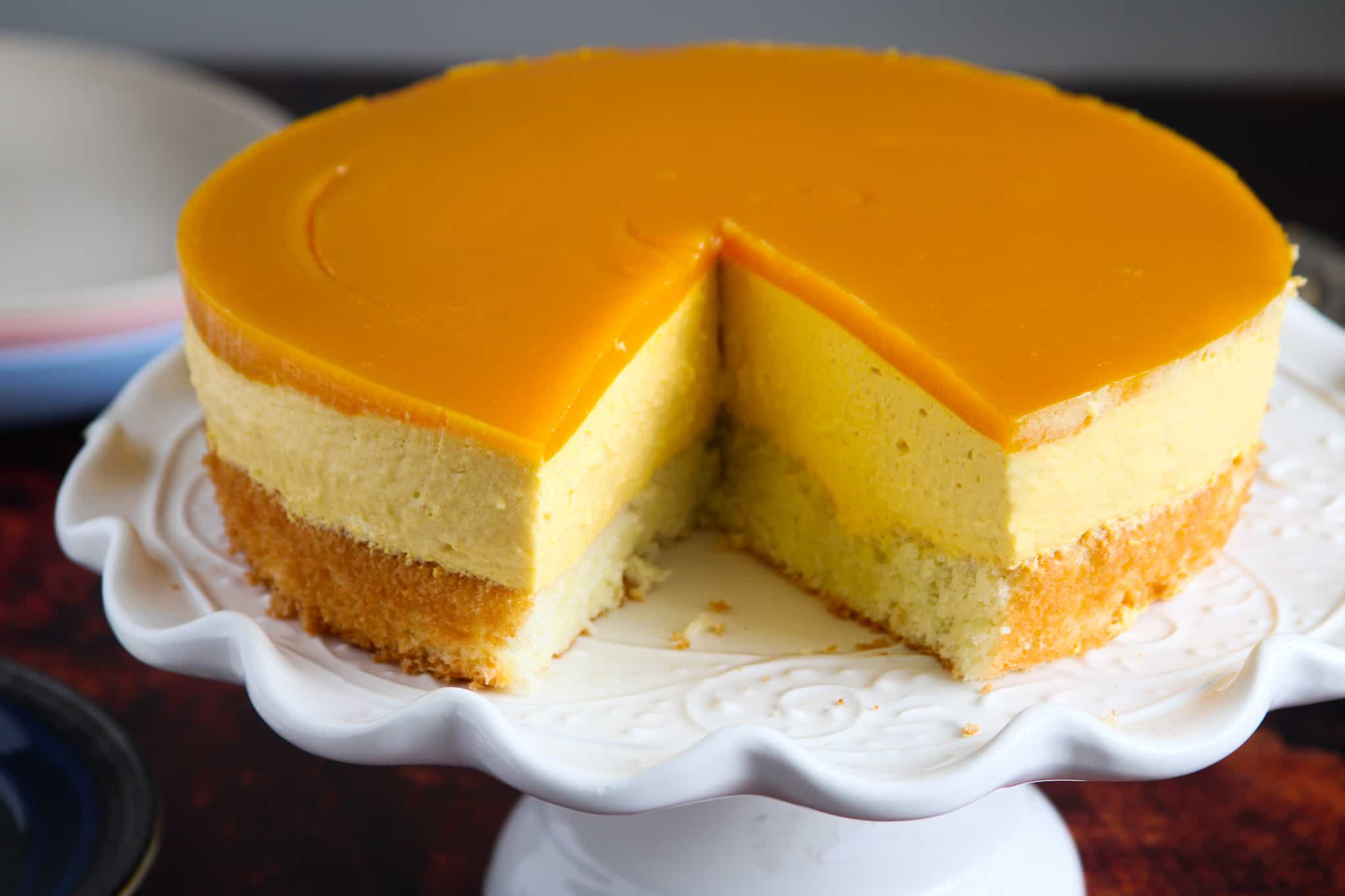
If you want more cake recipes, check these out:
- Raspberry Cake with Chantilly Cream
- Chiffon Cake with Pineapple Glaze
- Mango Roll Cake
- Blueberry Cheesecake
- Apple Streusel
- Mango Chiffon Cake with Mango Swiss Meringue Buttercream
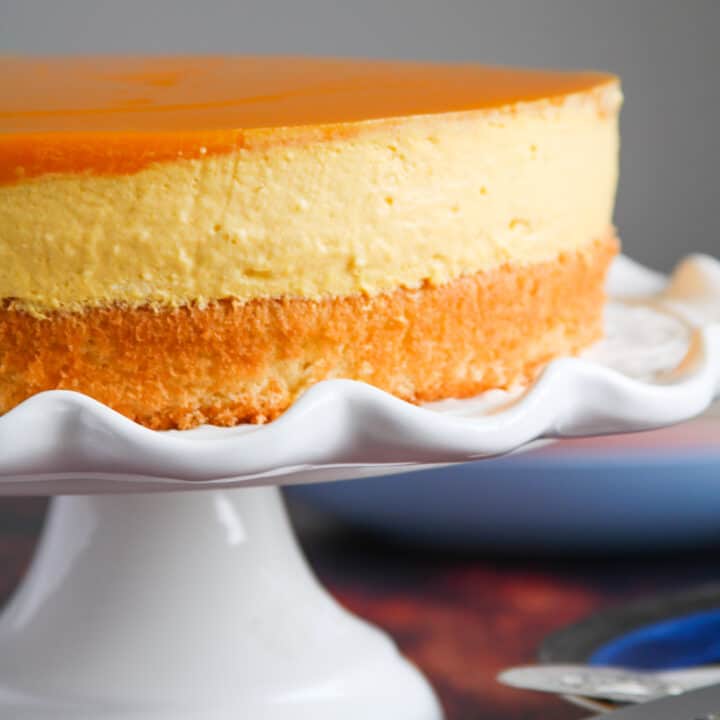
Mango Mousse Cake
Need a real mango treat? This Mango Mousse Cake is a decadent cake made of a moist sponge cake topped with a creamy mango mousse, then finished with a sweet mango gel topping. This is your serious mango craving fix!
Ingredients
For the Sponge Cake
- 3 large eggs at room temperature
- 1/2 cup sugar
- 1/2 cup all-purpose flour
- 1/4 tsp baking powder
For the Mango Mousse
- 1 and 1/2 cups heavy cream
- 3-6 tbsp of icing sugar
- 2 cups of Mango Puree ( canned ones)
- 1 sachet of Knox unflavored gelatin powder ( 7 grams)
- 50 ml water
For the Mango Gel Topping
- 1 cup mango puree (canned)
- 3-6 tbsp of sugar (or more)
- 1 and 1/2 tsp Knox unflavored gelatin powder
- 7 tsp water
For the Stock Syrup
- 1/4 cup water
- 1/3 cup of sugar
Instructions
Make the Sponge Cake
- Preheat oven to 350 F. Grease the bottom of an 8-inch round cake pan and line it with parchment paper. In a bowl of a stand mixer, beat the eggs for about a minute until foamy. Add the sugar gradually and continue to beat until the eggs have tripled its volume. You will know when it is ready if you lift the beater and the batter falls back on the surface forming ribbons that do not sink in right away. This should take about 7-10 minutes.
- Combine the flour and baking powder and sift this mixture over the egg batter gradually, folding gently but thoroughly after each addition using a rubber spatula. Check the bottom part by scraping from under to make sure that no streaks of flour remain.
- Pour and scrape the batter into the prepared pan and bake at 350 F for 20-25 minutes, or until a toothpick inserted at the center of the cake comes out clean. The cake is lightly golden.
- Let the cake cool slightly in the pan, then unmold and transfer it into a wire rack, with only the parchment paper attached to it. Let it cool completely. Once cool, remove the parchment backing and return the cake back into the pan. Replace the cake ring of the springform pan to enclose the cake once again.
- Brush the surface of the cake with just enough stock syrup. You do not need to use up the entire stock syrup. I am often left with about 1/2 to 1/4 of the entire amount. You can save the rest for use with desserts, or for drizzling on fruits. Store it in the fridge, covered.
Make the Mango Mousse
- Whip the heavy cream with the icing sugar until stiff peaks form using a stand mixer or a hand-held mixer. Fold the whipped cream gradually into the mango puree until the mixture is uniform in color. Refrigerate the mousse while you work with the gelatin.
- Place 50 ml water in a small microwavable ramekin or bowl. Sprinkle the gelatin powder over the water and let the mixture stand for about a minute or so. Heat the mixture in the microwave for 15 seconds until it is clear. You can heat for an additional 5 seconds at a time if necessary. Let this cool slightly.
- To combine the gelatin and mango whipped cream, first scoop about 1/4 cup of the whipped cream and stir it to the gelatin until combined. Fold the gelatin-cream mixture back to the rest of the whipped mango cream in the bowl until well-blended*.
- Pour the mousse over the cake in the pan, letting the mixture fill up the entire surface. Place the pan in the fridge for 8 hours or until the mousse is set. You do not need to cover it.
Make the Mango Gel Topping
- Stir sugar in the mango puree. You can add more sugar (or less) if you prefer. Place water in a small microwaveable ramekin or bowl. Sprinkle the unflavored gelatin over the water and let the mixture stand for half a minute. Microwave the mixture until it is clear, about 10 seconds or so. If necessary, microwave for an additional 5 seconds at a time.
- To add the gelatin to the mango syrup, again, spoon about 2 tablespoons of mango syrup to the gelatin and stir. Pour back the mixture to the rest of the mang syrup in the bowl and stir well. Gently pour over the mango mousse. Refrigerate the cake for 2-4 hours or until the gel is set.
Stock Syrup
Notes
The Mango Puree that I use are canned ones. They are called Mango Pulp and the type I use is called Kesar Mango Pulp.
I updated the recipe to add the tempering process, which is done by mixing in a little bit of the liquid to be set to the gelatin first, then stirring that mixture back to the entire liquid. This process prevents lumps in the mango mousse and mango gel.
Recommended Products
As an Amazon Associate and member of other affiliate programs, I earn from qualifying purchases.
Nutrition Information:
Yield: 10 Serving Size: 1Amount Per Serving: Calories: 325Total Fat: 6gSaturated Fat: 3gTrans Fat: 0gUnsaturated Fat: 2gCholesterol: 69mgSodium: 40mgCarbohydrates: 66gFiber: 1gSugar: 60gProtein: 4g
Values are approximate.
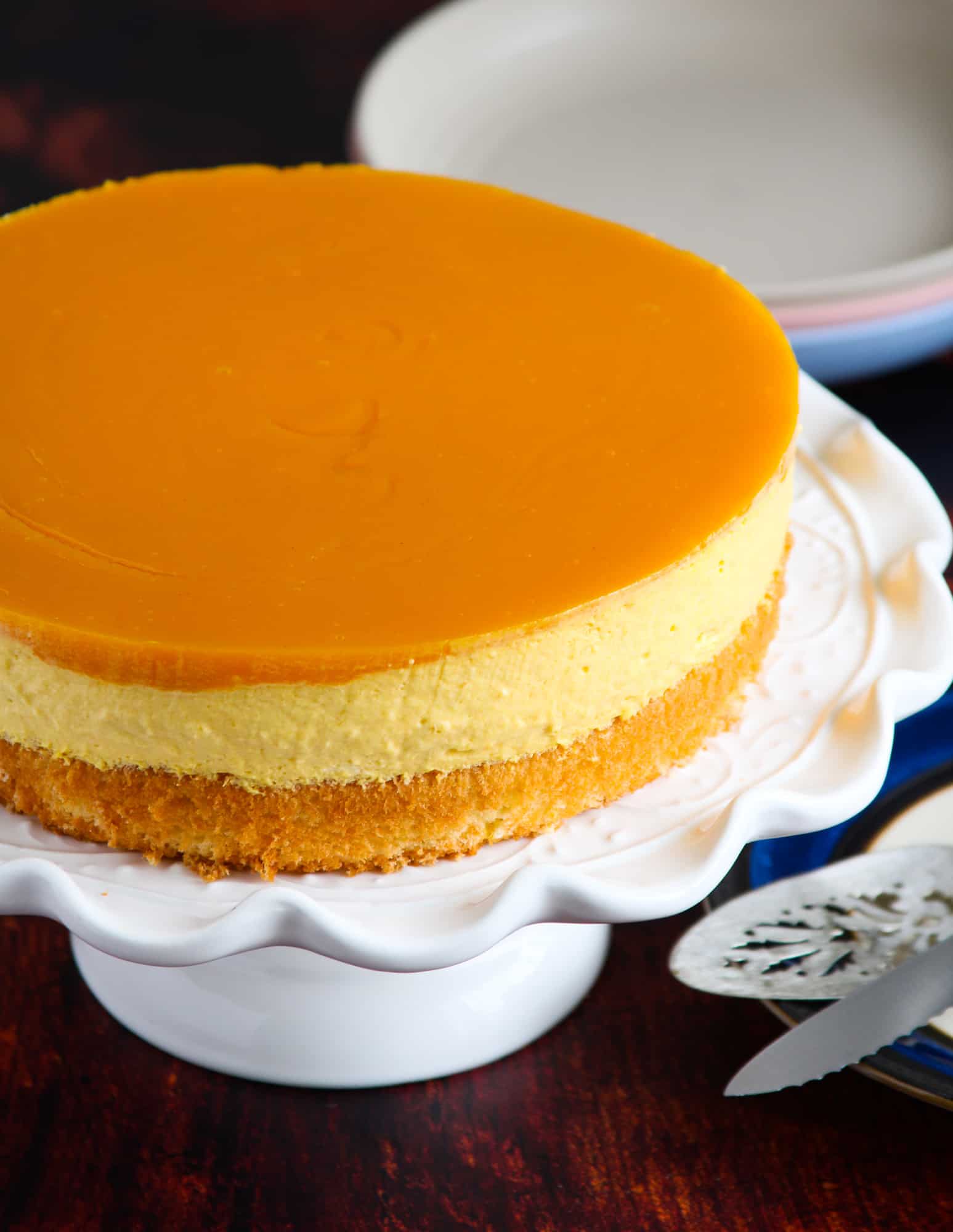
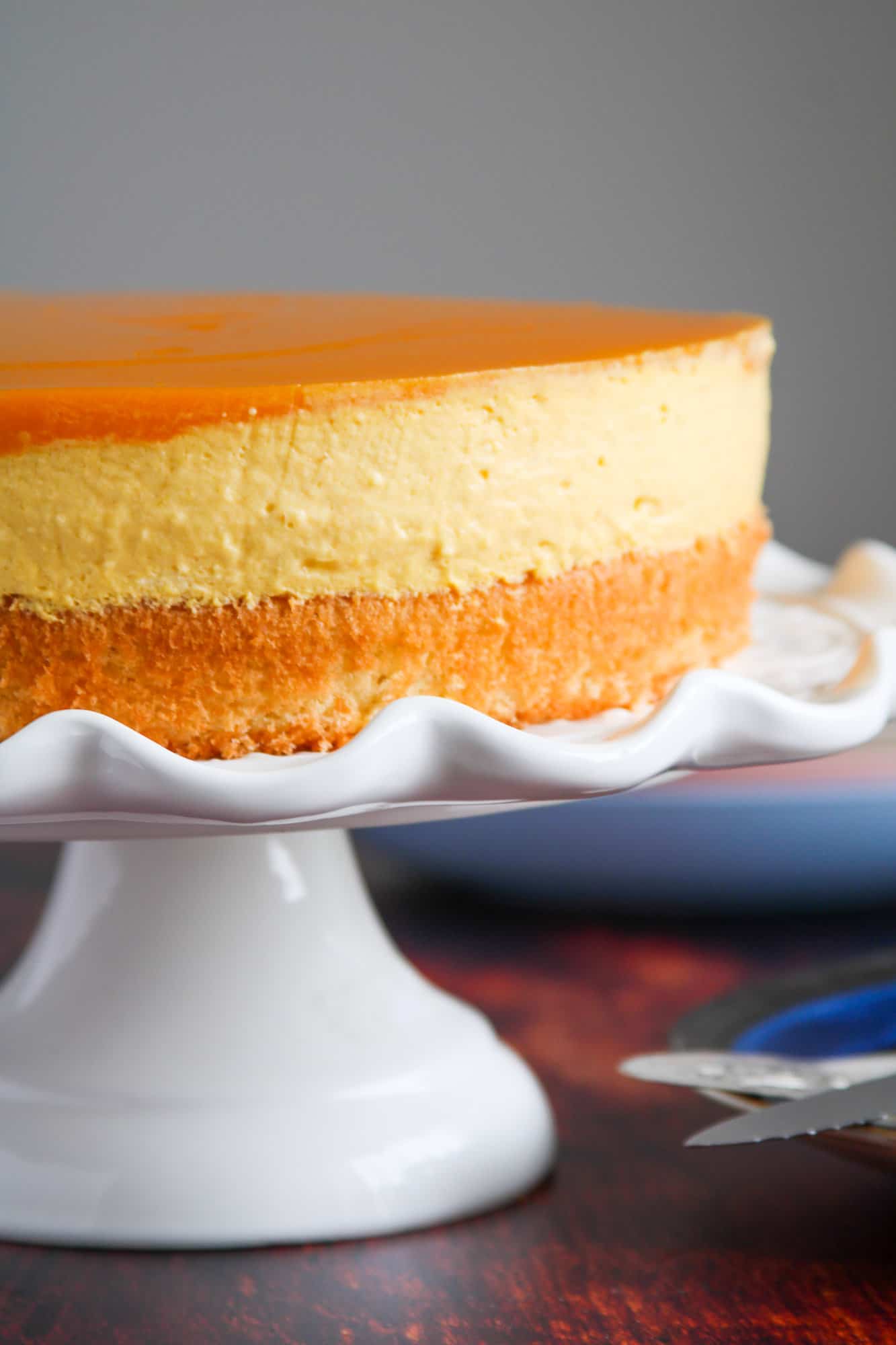
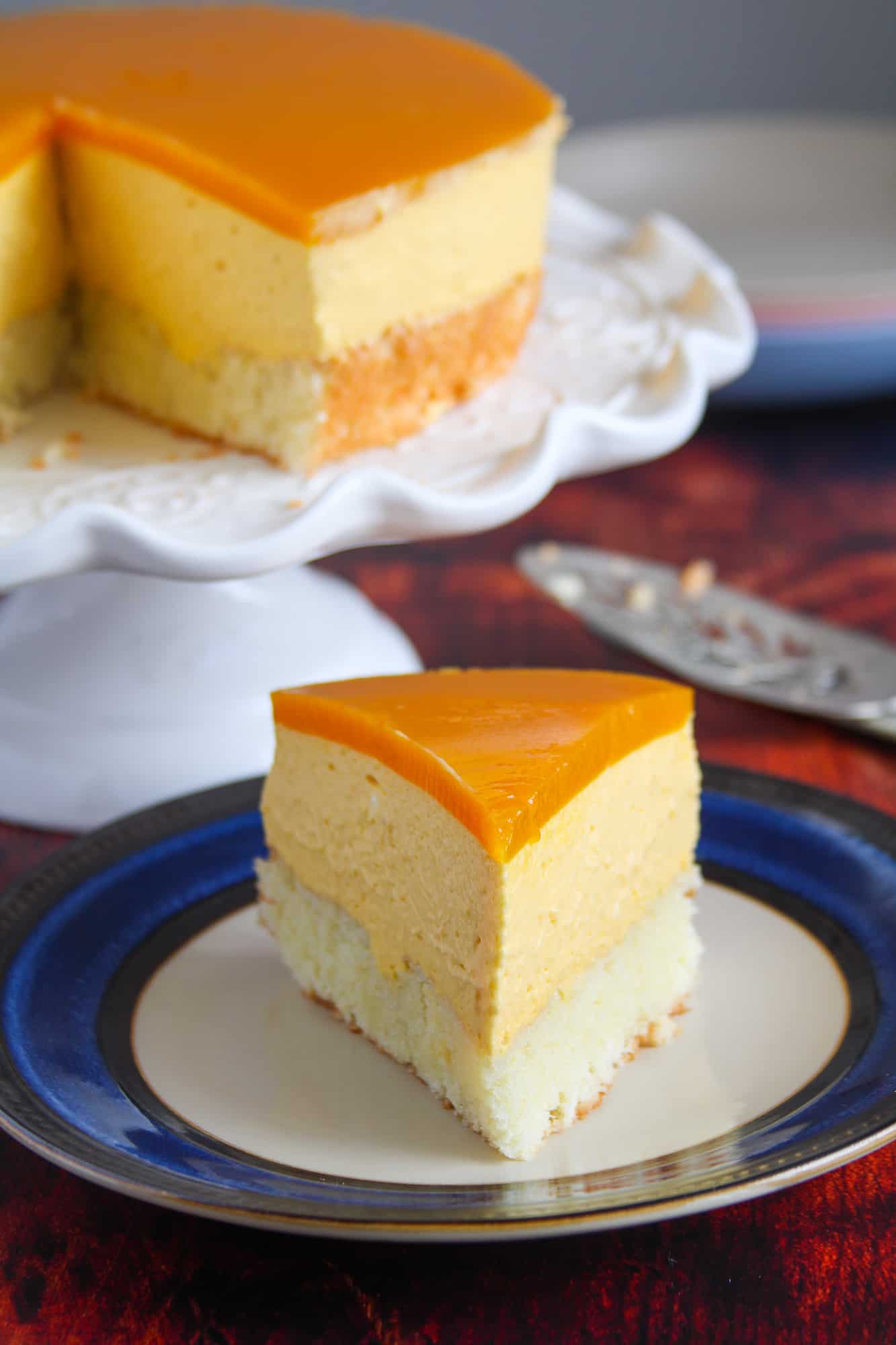
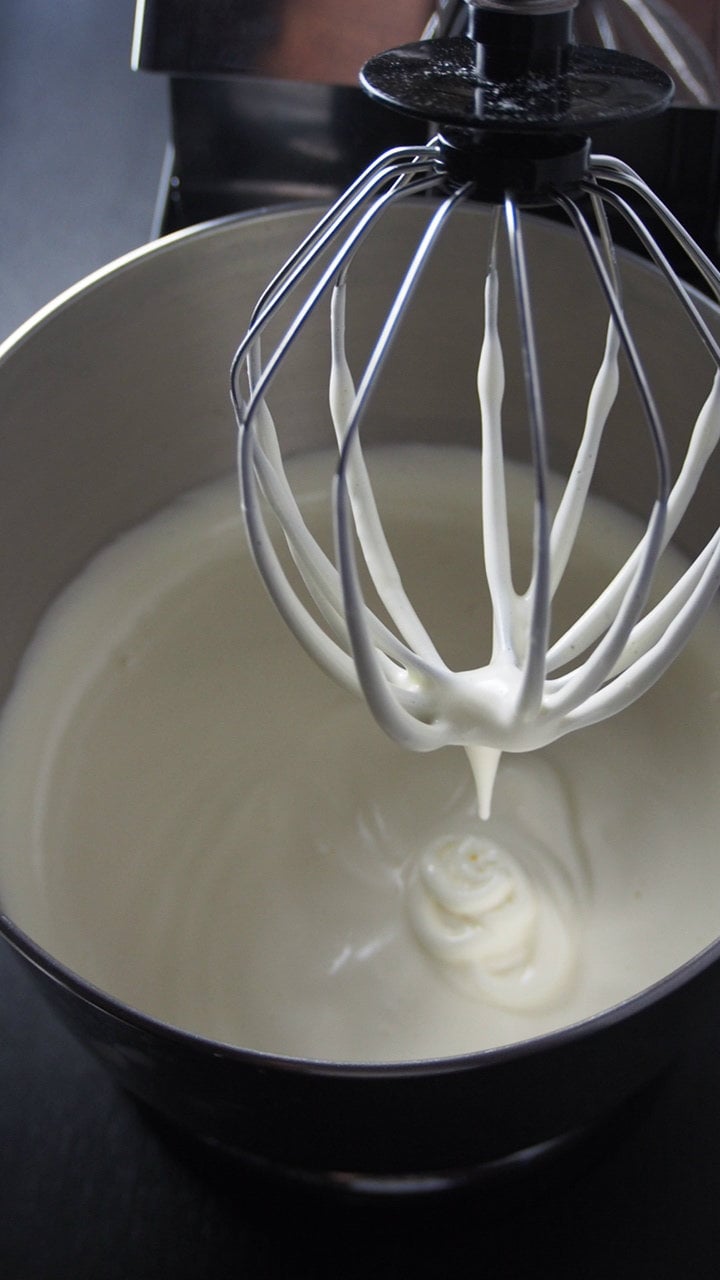
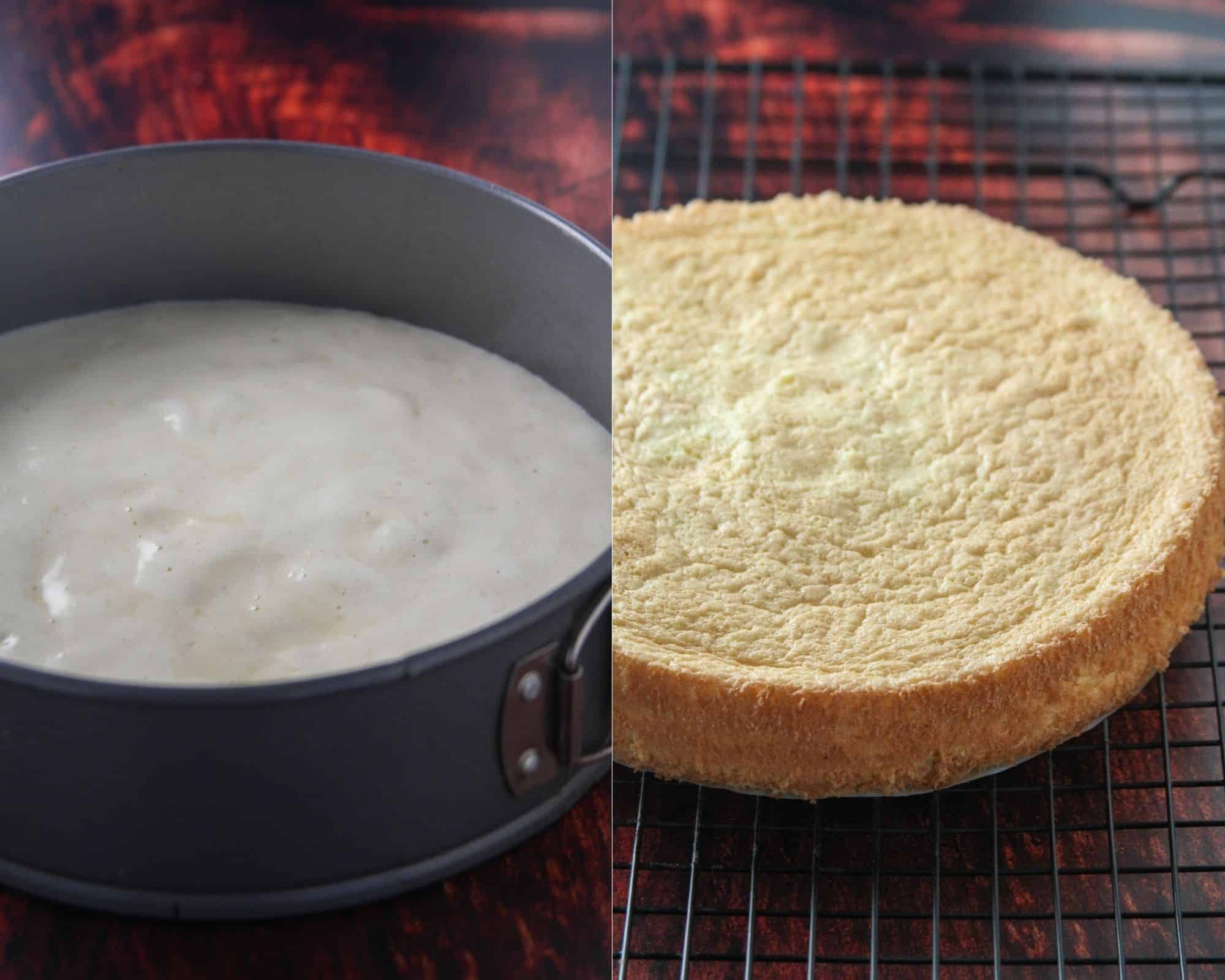

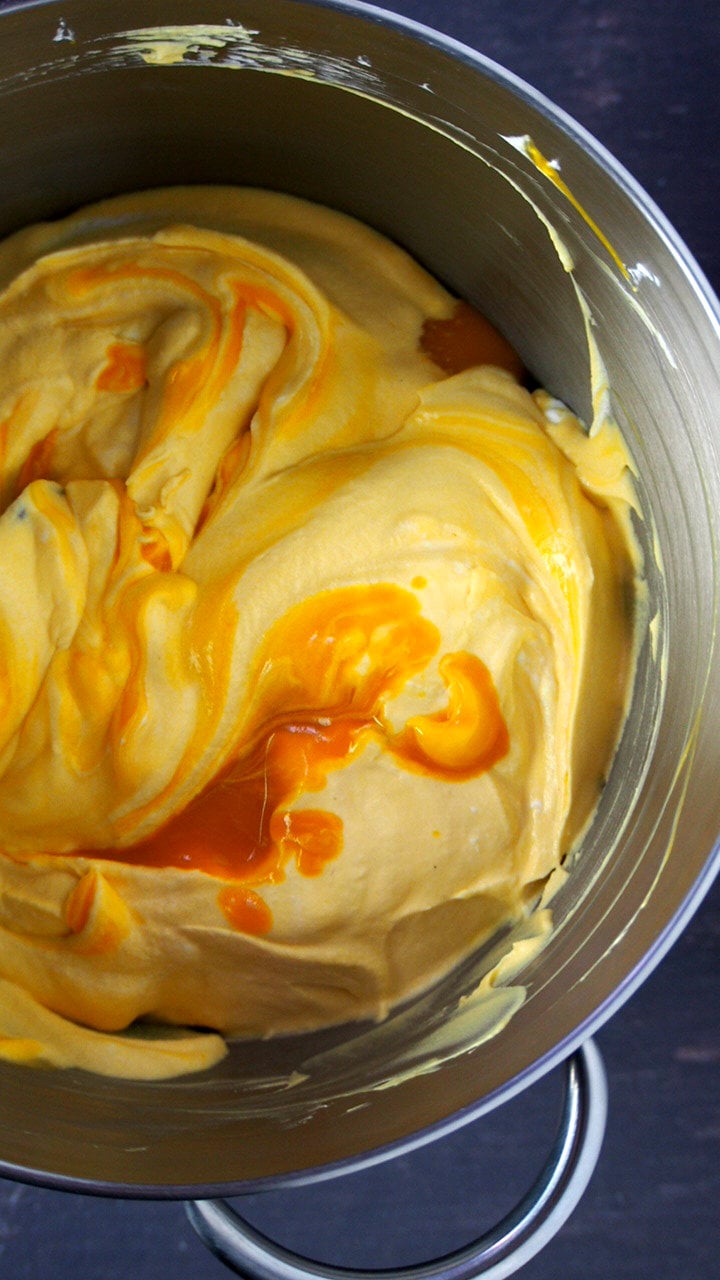
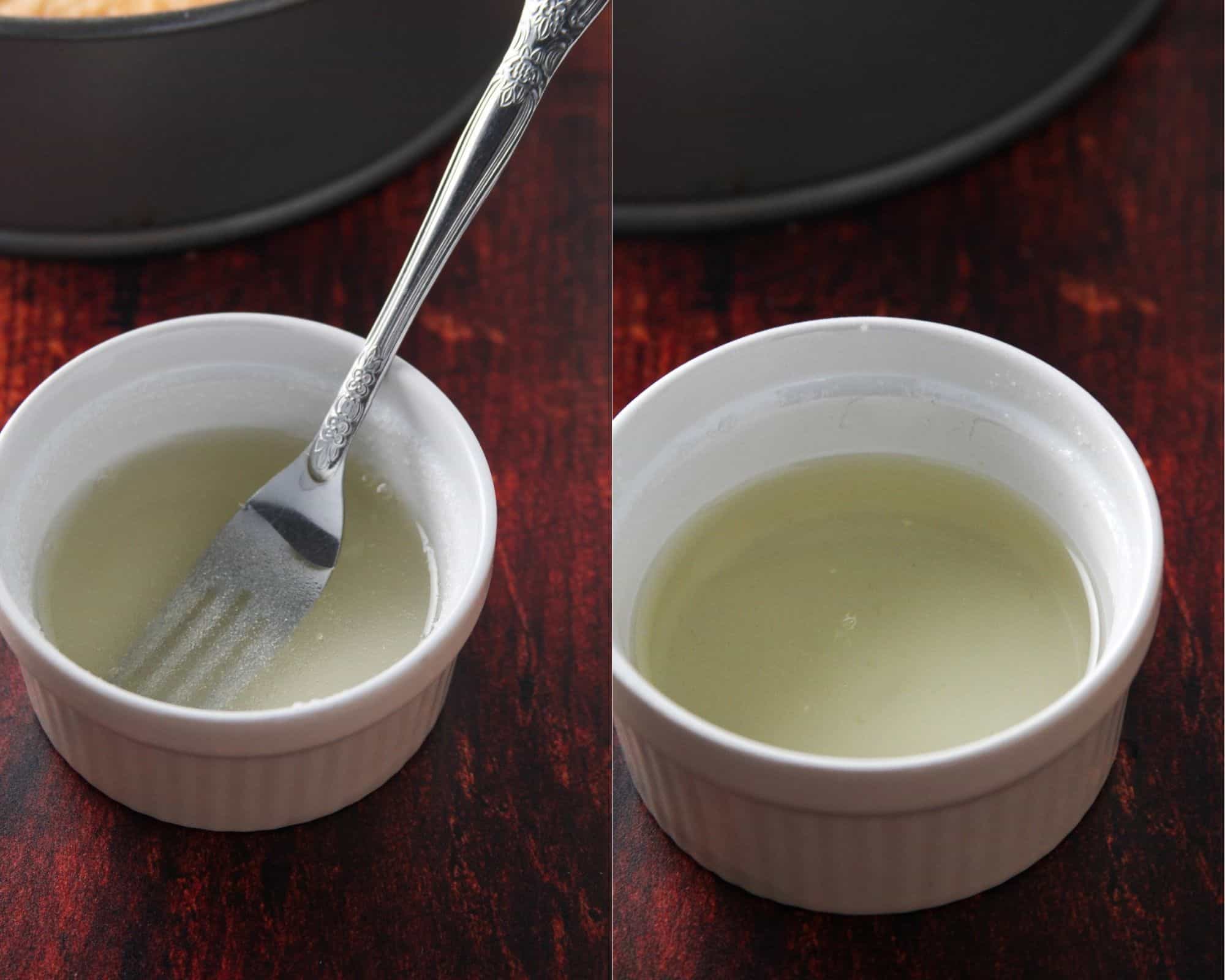
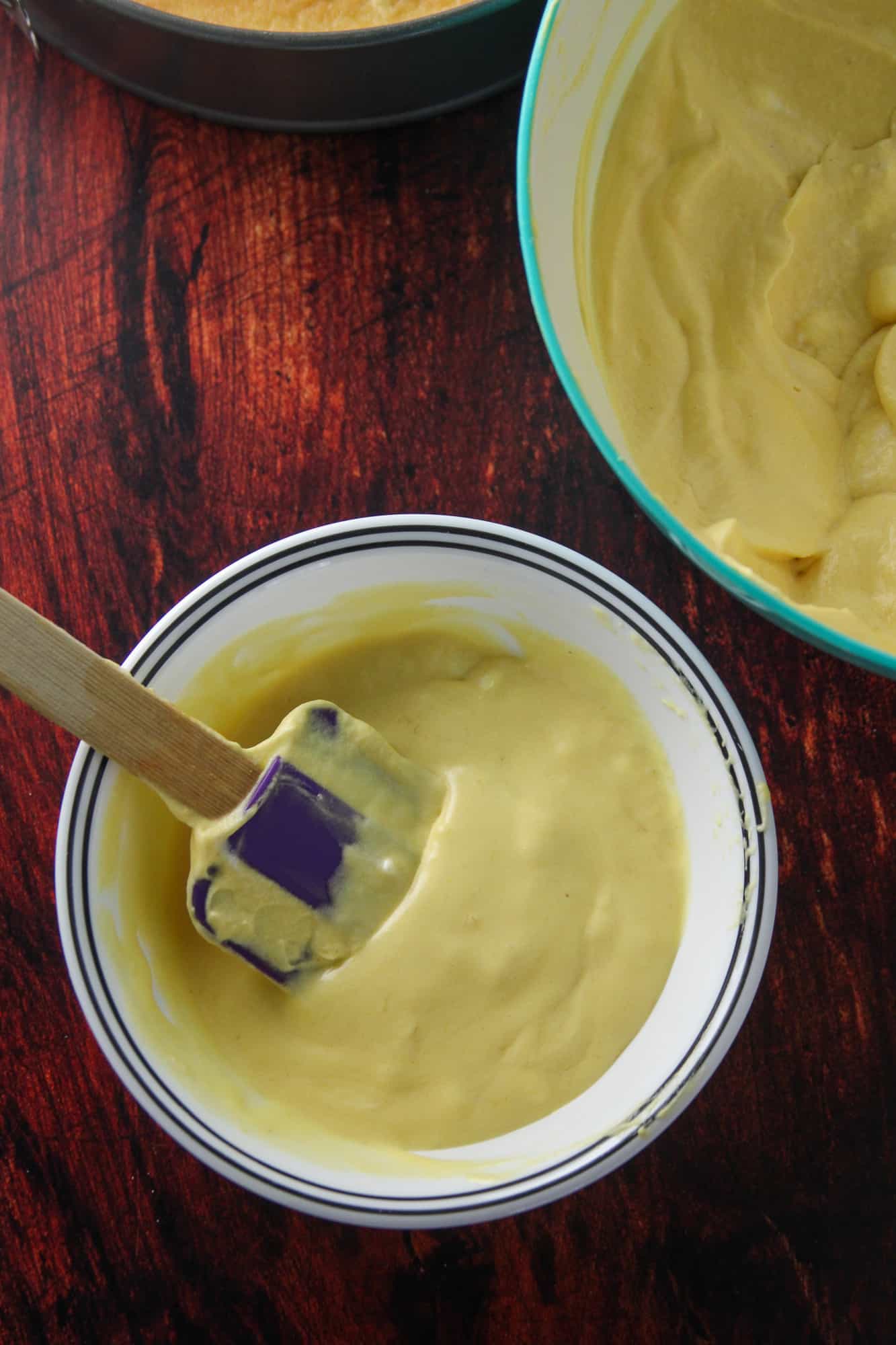
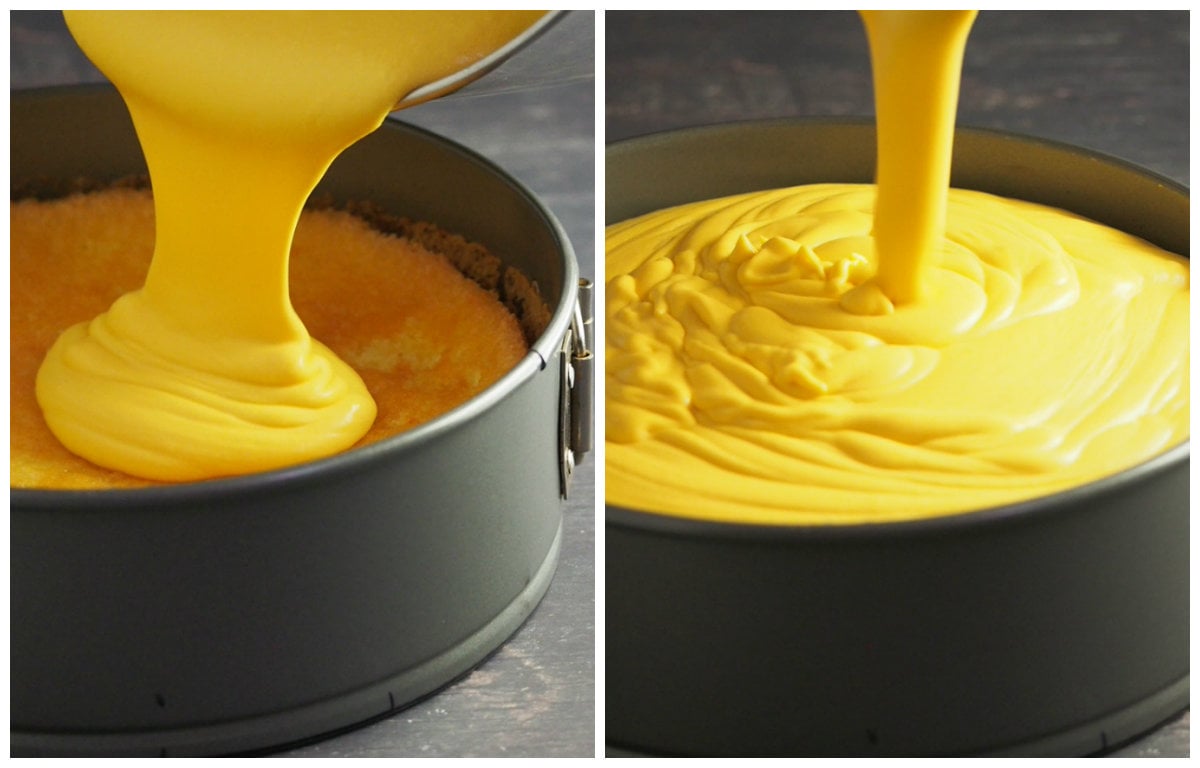
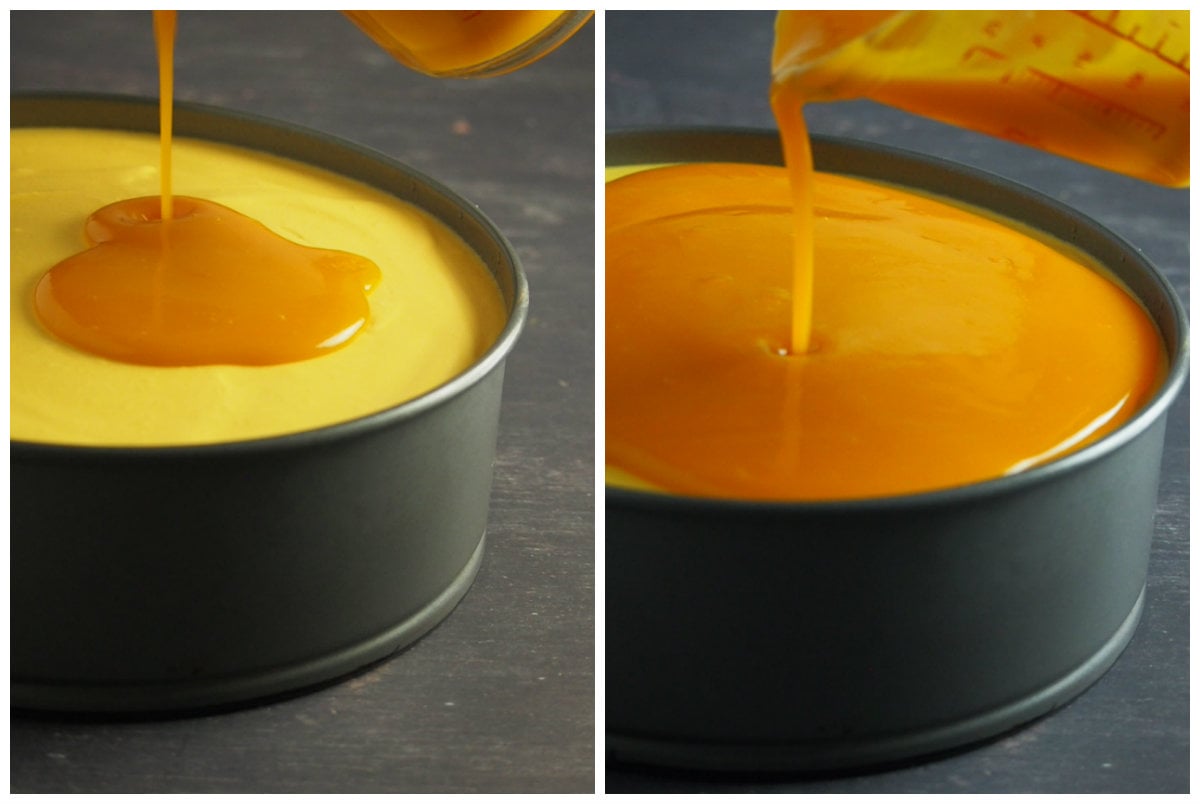




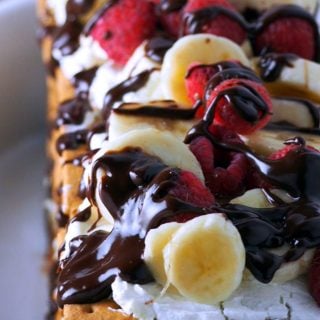
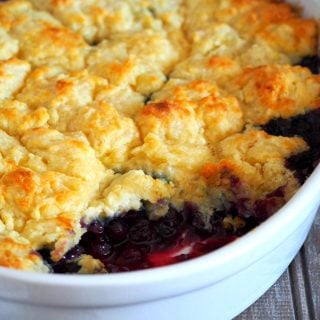


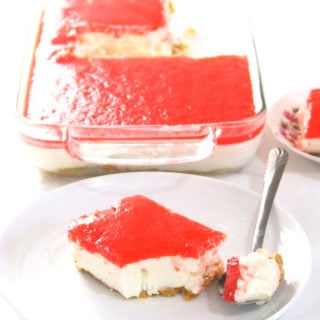

Hi, I made this last night. I followed the directions exactly and my mousse went instantly lumpy as soon as I mixed the ¼c mango mousse gelatin mixture with the rest of the refrigerated mango mousse. I have never worked with gelatin before. Is there any tips I should know before I try it again? Thanks ☺️
Hello Elizabeth! I am sorry you had trouble with the gelatin. Is there any chance the gelatin was not dissolved properly in the hot water? It may be one of the reason for the clumps.
I wanted to use a 10 inch springform to serve more people, so I did the recipe + 1/2. I also added lime juice as I wanted it tart. 🙂 The mousse is setting on top of the cake in the fridge now. I’ve tasted all the components and it’s delicious! Next time I’d add even more lime juice (I was just afraid of it not properly setting, but I added a tiny bit more gelatin and it seems to be good!)
I made this recipe a few years ago but substituted passion fruit puree for the mango and it was one of the best desserts I have ever eaten. The mango is great and I know it’s going to be a great party dessert for our BBQ tomorrow… but if you want an even more blow-your-socks-off dessert, use her recipe and substitute passion fruit puree for the mango. 🙂
Thanks for the recipe!
It will set right?? I am nervous
Hi Sammy! It will, given the instructions are closely followed ❤️. Keep me posted!
This mango mousse cake looks amazing. Can’t wait to try.
I hope you enjoy it!
Hi! So I made the cake and kept it in the fridge overnight! It has not set what do I do?!?